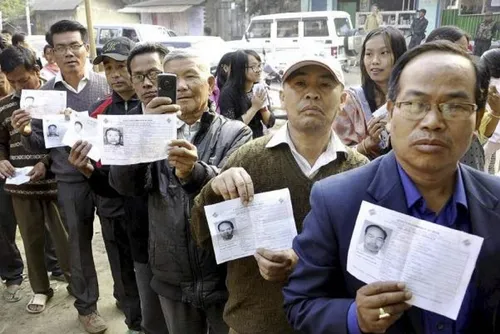
Truths and Falsehoods of Blockchain Voting - trilogy part 1
When it comes to sensitive Blockchain based solutions like voting, we have an increasingly clear idea about what it should be and how it should work. However we often refer to prominent requirements which do not really refine the questions at stake. Perhaps, because of the proliferation of methods like Zero-Knowledge Proof inciting the Blockchain hype, there is a serious risk of focusing on aspects that are not really necessary to solve the client’s problem.
To illustrate, let’s consider a couple of the most common truths and falsehoods in Blockchain voting.
Misleading identity requirements are one of the main concerns about online voting. Too many people still believe that voters' official identity is needed inside a secure voting system. As we get to grips with the way that new technology affects different processes, it’s time for a deep, systematic rethink. Otherwise, as we attempt to modernize our society, we will inevitably encounter obstacles.
Cryptography allows us to manage and personalize brand new creations, so now, more than ever, we have to pay attention. What matters in voting is the legitimacy of voters, not the details of their identity during the voting process.
As we will see later, voting involves conflicting requirements, making any voting app a hard challenge to solve. What makes cryptography so convenient is that it allows us to use trustworthy credentials. It is now easy to issue tamper-proof credentials, including quite sophisticated levels of control and/or monitoring of the way holders can use those virtual objects. To vote, not only is it unnecessary to go to a physical poll station, but we also don’t need to undergo any identity check during the poll to cast the votes.
Just imagine a post office in charge of organizing the poll sending a fungible “ballot credential” (without any information about your name, address, sex, age etc.) right into your private wallet. It would be like a dedicated 5 Swiss Franc coin without a visible serial number. This “ballot credential” would be the only tool required to start the voting process securely.
It is now possible to customize a “ballot credential” which - if needed - can even be impossible to transfer to anyone else (including close relatives) to prevent anyone else voting on your behalf. This is the opposite of what most systems have been offering so far - the option to resort to proxy voting. In terms of societal change, it could be compared to emails enabling direct contact, eliminating the need for intermediaries.
Blockchain tokens are to some extent tamper-proof credentials, able to match the sufficient and necessary conditions required to access a poll. This makes it possible to prevent fraud such as the falsification of voting rights., Today, tokens are the most convenient and secure credentials for accessing polls. They can be security tokens, utility tokens or even payment tokens (as defined by the Swiss regulator Finma and also quite similar to some of the other regulators) and serve as the sole and unique identifier needed to be authorized to vote.
HOWEVER, in our opinion, using the “credential” token to cast votes directly is not an acceptable solution, regardless of what other Blockchain solutions have suggested. This is because of the conflicting requirements between legitimacy and data anonymization.
Voting with a show of hands is obviously not the goal if we claim to provide a serious voting solution. Using “credential” tokens directly as the “ballot papers” to cast votes causes two problems.
Firstly it requires handling (i.e moving). Credential tokens can be worth millions, representing extremely expensive assets. Having to handle those credentials for voting purposes is clearly not recommended.
Secondly, even in the case of fungible tokens, it becomes possible to track who votes what if we use the credential tokens as “ballot papers”. Before Blockchain technology, professional voting systems used extensive shuffling techniques combined with encryption, precisely to prevent tracking. New voting designers must not ignore this issue. domino.vote has created distinct, separate layers between the credentials used to securely onboard voters and the voting process, offering voters absolute guarantees about the confidentiality of their vote.
If poll organizers still prefer to use digital IDs or KYC services to onboard their community, they can select those options in the domino.vote SaaS voting portal, which is just one off our possibilities to enrol voters. However, we advocate the seamless token option in response to the widespread misleading identity requirement.
WRITTEN BY
domino.vote - CEO Founder
To be continued soon:
- Private Data vs. Blockchain
- The Right to Erasure